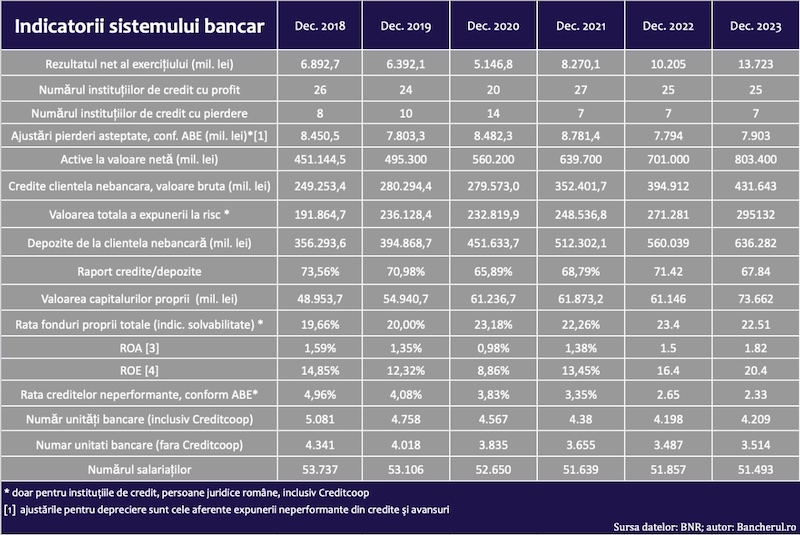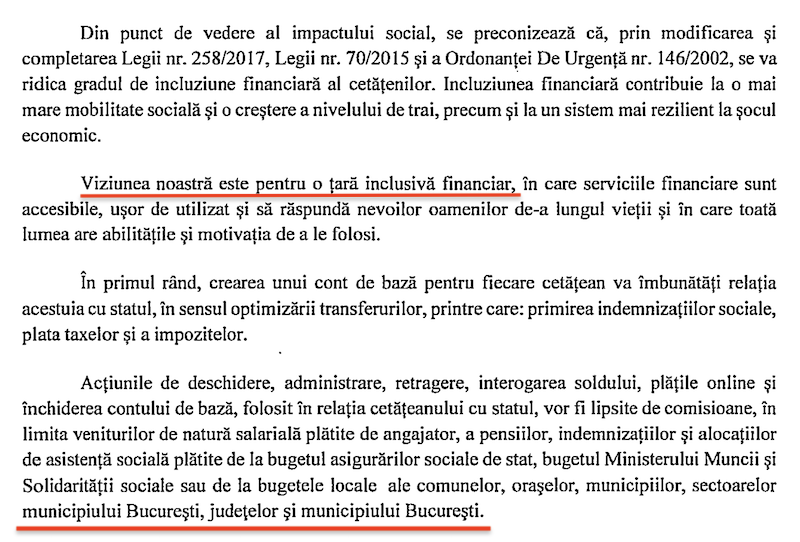RZB Group CEE Banking Sector Report 2008: Banking Assets showed record growth in CEE in 2007
 Autor: Bancherul.ro
Autor: Bancherul.ro
2008-09-30 09:15
Ě CEE banking markets grew strongly in 2007 (+31 per cent)
Ě Global financial crisis has slowed growth momentum in 2008
Ě Long-term growth potential at sustainable level
Ě Deposits move into spotlight as funding diversifies
Ě Two Austrian banking groups among Top 3 in CEE
Ě Raiffeisen International has strongest distribution network
After several years of tremendously high growth rates of the banking markets in Central and Eastern Europe (CEE) the development is coming back to more moderate and sustainable levels, reports the latest edition of the annual CEE Banking Sector Report prepared by analysts of Raiffeisen Zentralbank Ísterreich AG (RZB) and Raiffeisen Centrobank AG (RCB).
The CEE Banking Sector Report offers an in-depth coverage of the 16 most important banking markets of the region. For a better comparison the CEE region was split into the sub regions Central Europe (CE), Southeastern Europe (SEE) and the Commonwealth of Independent States (CIS).
Record asset growth in 2007 despite global financial crisis
In 2007 banking assets in CEE recorded a growth of 31 per cent in EUR terms compared to 2006. This is strongest expansion of banking assets in volume terms to date. Total banking assets grew by 333 billion euros to 1,417 billion euros, i.e. by 100 billion euros more than the increase of 2006. Total banking assets were growing at an annualised rate of around 20 per cent year-on-year in the first half of 2008. For the period from 2008 to 2013 the analysts forecast an annual banking asset growth of 15 per cent compared with 26 per cent between 2003 and 2008. "Despite the lower growth rates, CEE remains a highly dynamic region with outstanding prospects for growth and prosperity in the years to come", explained Walter Demel, senior analyst of RZB and co-author of the study.
Banks shift asset structure towards customer loans
Also total loans showed a record growth of 42 per cent year-on-year in EUR terms in 2007, boosted by an environment of booming domestic economies. Loan growth in SEE and the CIS continued to outpace that of CE. For the SEE countries total loans reached almost 48 per cent of GDP in 2007, surpassing the CE countries (45.7 per cent of GDP), while the CIS countries reached the 40 per cent mark. "There is still considerable long-term catch-up potential for the CEE banking markets. The gap between the CEE countries and the eurozone remains substantial", Demel added. Small and medium-sized enterprises will further boost the corporate loan business, but also the demand for retail loans will remain at a very high level.
Deposits move into the spotlight
Banking assets and loan growth remained very strong overall in 2007, defying the impact of the US subprime mortgage crisis on the availability and pricing of external funding for the most part. However, the contagion of the crisis to other parts of the financial market and the global economy, as well as its extended duration, have left their marks on the banking sector development in CEE in the first half of 2008. The global financial crisis has lead to a protracted difficult situation for funding via financial markets. Therefore, deposits have gained in importance for banks in the region and have lead to an advantage for those banks which already have a solid customer base.
Although deposit growth continued to lag behind loan growth, deposits recorded an increase measured as a percentage in GDP in all CEE countries. In SEE banks managed to sustain the strong growth in deposits from recent years amounting to 48 per cent of GDP in 2007, which is twice as much as in the year 2000.
Improved regulation and the entry of foreign banks also had a positive effect on deposit growth in the CIS. Banks have become reliant on external funding sources whose availability ebbed away with the global financial crisis. Therefore, the majority of banks in the CIS had to rely on deposits to fund the strong structural demand for loans. Total deposits in the CIS region amounted to almost 25 per cent of GDP in 2007.
The loan/deposit ratio, at almost 104 per cent in SEE and about 100 per cent in CE, has shown a diminishing overhang of deposits in these two regions. But there are also some significant differences between the individual countries. For instance, in SEE the ratio of total deposits as a percentage of total loans ranged from 46 per cent in Albania to 115 per cent in Romania. In the CIS the situation was different, as total deposits did not suffice by far to cover total loans.
The strong reliance on wholesale funding of the CIS banking sector for financing its credit expansion has turned out to become problematic when the global liquidity situation deteriorated as a result of the US subprime mortgage crisis. The funding of the persisting demand for loan growth has become one of the key challenges even for countries whose ratio between loans and deposits is more balanced. The analysts from RZB and RCB forecast that the volume of outstanding loans in CEE should increase by 1,250 billion euros in the period from 2008 to 2013, whereas deposits should increase only by around 950 billion euros in the same period. This would leave an additional loan volume of 300 billion euros, most of which in the CIS, to be funded through different channels. In addition to this, part of the loan volume extended in recent years was funded on short-term basis, the refinancing of which will add to the challenge of financing the future expansion.
Two Austrian banking groups among the Top 3 in CEE
Among the top five international banks in terms of total assets Raiffeisen has outstripped Erste Bank on the second position, mainly due to its large CIS exposure. Both Austrian banking groups (with a market share of 4.6 per cent of total assets in CEE) have managed to reduce the gap to the still leading UniCredit with a market share of 6.4 per cent in CEE.
"We have also compared the average annual growth rates for the period from 2002 to 2007 to see which banks managed to have a continuous high level of asset growth within the past five years. The result was that Raiffeisen ranks first with an average annual asset growth rate of about 38 per cent, whereas UniCredit holds the second place with about 30 per cent and SociÚtÚ GÚnÚrale on the third place grows at about 28 per cent", stated Stefan Maxian, co-author and head of Company Research at RCB.
Branch network expansion continues ľ Raiffeisen with strongest distribution network
The banksĺ network of branches in CEE increased substantially in 2007. For instance, the four largest Western banks had 9,193 outlets in 2006, and 10,577 in 2007 (plus 15 per cent). This goes to reflect the competitive nature of the region's banking sector and also shows that the market is far from being saturated. For example, the acquisition of a controlling share in Rosbank by SociÚtÚ GÚnÚrale added 600 branches to its network and 11.4 billion euros to its total assets. In Ukraine, IntesaSanpaolo recently acquired Pravex Bank with total assets of 783 million euros and 580 branches, while Alpha Bank took over Astra Bank with 50 branches, and SociÚtÚ GÚnÚrale bought Ikar Bank with 14 branches.
Overall, Raiffeisen International offers the strongest distribution network with a total of 3,077 branches in 15 CEE markets followed by Italy's UniCredit with 2,858 branches in 16 markets. French SociÚtÚ GÚnÚrale ranks third with 2,727 branches in 14 countries.
You can download the Banking Sector Report from http://www.rzb.at/ceebankingreport2008.
Comentarii
Adauga un comentariu
Adauga un comentariu folosind contul de Facebook
Alte stiri din categoria: Analiza
Creditele de nevoi personale cu cele mai mici dobanzi
CEC Bank a anuntat o promotie la creditele de nevoi personale, cu o dobanda de 7,9%, valabila pentru cei care-si incaseaza veniturile intr-un cont al bancii, cea mai mica dintre un numar de 13 astfel de imprumuturi acordate de 9 banci, conform topului realizat de detalii
Indicatorii sistemului bancar la finalul anului 2023
indicatorii agregati ai bancilor romanesti la finalul anului 2023, calculati pe baza informatiilor din raportarile prudentiale neauditate, trimise la Banca Nationala a Romaniei (BNR) de institu╚Ťiile de credit, persoane juridice romane ╚Öi de sucursalele din Romania ale institutiilor detalii
La care banci se poate face actualizarea online a datelor de catre firme
Actualizarea online a datelor firmelor, pe site-urile sau in aplicatiile bancilor, este posibila la doar trei institutii de credit, la restul fiind nevoie de prezenta intr-o sucursala. ING Bank a anuntata ca a introdus op╚Ťiunea de actualizare a datelor 100% detalii
Conturi bancare gratuite pentru incasarea salariului, pensiei si indemnizatiilor sociale. Dar cine poate sa-si faca unul?
Legea care permite in prezent celor fara conturi bancare sa-si deschida unul nou, denumit cont de baza, fara comisioane de deschidere, inchidere si retragere numerar la bancomat, a fost modificata de Parlament. Noua varianta a acestei legi, care mai asteapta detalii
- Indicatorii sistemului bancar la finalul trimestrului 3 din 2023
- Indicatorii sistemului bancar la finalul T2 2023
- Genoxinvest, o frauda online deghizata in platforma de investitii in criptomonede
- Raiffeisen nu-si despagubeste clientii fraudati online
- BRD plateste o dobanda de doar 0,1% la depozitele vechi, in stoc
- Bancile au facut un profit record de 10 miliarde lei in 2022
- Aedificium, fosta Raiffeisen Banca pentru Locuinte, si statul, obligati de judecatori sa achite prima de stat unui fost client
- Profitul bancilor, in crestere cu 19%
- Indicatorii sistemului bancar la finalul T1 2022
- Topul reclama╚Ťiilor la b─ânci ├«nregistrate la Reclamatiibanci.ro
Profil de Bancher
-
Cristian Sporis, Vicepresedinte, Divizia Corporatii
Raiffeisen Bank

Cristian Sporis a facut parte din echipa ... vezi profil
Criza COVID-19
- In majoritatea unitatilor BRD se poate intra fara certificat verde
- La BCR se poate intra fara certificat verde
- Firmele, obligate sa dea zile libere parintilor care stau cu copiii in timpul pandemiei de coronavirus
- CEC Bank: accesul in banca se face fara certificat verde
- Cum se amana ratele la creditele Garanti BBVA
Topuri Banci
- Topul bancilor dupa active si cota de piata in perioada 2022-2015
- Topul bancilor cu cele mai mici dobanzi la creditele de nevoi personale
- Topul bancilor la active in 2019
- Topul celor mai mari banci din Romania dupa valoarea activelor in 2018
- Topul bancilor dupa active in 2017
Asociatia Romana a Bancilor (ARB)
- B─âncile din Rom├ónia nu au majorat comisioanele aferente opera╚Ťiunilor ├«n numerar
- Concurs de educatie financiara pentru elevi, cu premii in bani
- Creditele acordate de banci au crescut cu 14% in 2022
- Romanii stiu educatie financiara de nota 7
- Gradul de incluziune financiara in Romania a ajuns la aproape 70%
ROBOR
- ROBOR: ce este, cum se calculeaza, ce il influenteaza, explicat de Asociatia Pietelor Financiare
- ROBOR a scazut la 1,59%, dupa ce BNR a redus dobanda la 1,25%
- Dobanzile variabile la creditele noi in lei nu scad, pentru ca IRCC ramane aproape neschimbat, la 2,4%, desi ROBOR s-a micsorat cu un punct, la 2,2%
- IRCC, indicele de dobanda pentru creditele in lei ale persoanelor fizice, a scazut la 1,75%, dar nu va avea efecte imediate pe piata creditarii
- Istoricul ROBOR la 3 luni, in perioada 01.08.1995 - 31.12.2019
Taxa bancara
- Normele metodologice pentru aplicarea taxei bancare, publicate de Ministerul Finantelor
- Noul ROBOR se va aplica automat la creditele noi si prin refinantare la cele in derulare
- Taxa bancara ar putea fi redusa de la 1,2% la 0,4% la bancile mari si 0,2% la cele mici, insa bancherii avertizeaza ca indiferent de nivelul acesteia, intermedierea financiara va scadea iar dobanzile vor creste
- Raiffeisen anunta ca activitatea bancii a incetinit substantial din cauza taxei bancare; strategia va fi reevaluata, nu vor mai fi acordate credite cu dobanzi mici
- Tariceanu anunta un acord de principiu privind taxa bancara: ROBOR-ul ar putea fi inlocuit cu marja de dobanda a bancilor
Statistici BNR
- Deficitul contului curent, aproape 20 miliarde euro dup─â primele nou─â luni
- Deficitul contului curent, aproape 18 miliarde euro dup─â primele opt luni
- Deficitul contului curent, peste 9 miliarde euro pe primele cinci luni
- Deficitul contului curent, 6,6 miliarde euro dup─â prima treime a anului
- Deficitul contului curent pe T1, aproape 4 miliarde euro
Legislatie
- Legea nr. 311/2015 privind schemele de garantare a depozitelor ┼či Fondul de garantare a depozitelor bancare
- Rambursarea anticipata a unui credit, conform OUG 50/2010
- OUG nr.21 din 1992 privind protectia consumatorului, actualizata
- Legea nr. 190 din 1999 privind creditul ipotecar pentru investi╚Ťii imobiliare
- Reguli privind stabilirea ratelor de referin┼ú─â ROBID ┼či ROBOR
Lege plafonare dobanzi credite
- BNR propune Parlamentului plafonarea dobanzilor la creditele bancilor intre 1,5 si 4 ori peste DAE medie, in functie de tipul creditului; in cazul IFN-urilor, plafonarea dobanzilor nu se justifica
- Legile privind plafonarea dobanzilor la credite si a datoriilor preluate de firmele de recuperare se discuta in Parlament (actualizat)
- Legea privind plafonarea dobanzilor la credite nu a fost inclusa pe ordinea de zi a comisiilor din Camera Deputatilor
- Senatorul Zamfir, despre plafonarea dobanzilor la credite: numai bou-i consecvent!
- Parlamentul dezbate marti legile de plafonare a dobanzilor la credite si a datoriilor cesionate de banci firmelor de recuperare (actualizat)
Anunturi banci
- Cate reclamatii primeste Intesa Sanpaolo Bank si cum le gestioneaza
- Platile instant, posibile la 13 banci
- Aplicatia CEC app va functiona doar pe telefoane cu Android minim 8 sau iOS minim 12
- Bancile comunica automat cu ANAF situatia popririlor
- BRD bate recordul la credite de consum, in ciuda dobanzilor mari, si obtine un profit ridicat
Analize economice
- Infla╚Ťia anual─â a crescut marginal
- Comer╚Ťul cu am─ânuntul - ├«n cre╚Ötere cu 7,7% cumulat pe primele 9 luni
- România, pe locul 16 din 27 de state membre ca pondere a datoriei publice în PIB
- Rom├ónia, tot prima ├«n UE la infla╚Ťia anual─â, dar decalajul s-a redus
- Exporturile lunare în august, la cel mai redus nivel din ultimul an
Ministerul Finantelor
- Datoria public─â, 51,4% din PIB la mijlocul anului
- Deficit bugetar de 3,6% din PIB dup─â prima jum─âtate a anului
- Deficit bugetar de 3,4% din PIB dup─â primele cinci luni ale anului
- Deficit bugetar îngrijorător după prima treime a anului
- Deficitul bugetar, -2,06% din PIB pe primul trimestru al anului
Biroul de Credit
- FUNDAMENTAREA LEGALITATII PRELUCRARII DATELOR PERSONALE IN SISTEMUL BIROULUI DE CREDIT
- BCR: prelucrarea datelor personale la Biroul de Credit
- Care banci si IFN-uri raporteaza clientii la Biroul de Credit
- Ce trebuie sa stim despre Biroul de Credit
- Care este procedura BCR de raportare a clientilor la Biroul de Credit
Procese
- ANPC pierde un proces cu Intesa si ARB privind modul de calcul al ratelor la credite
- Un client Credius obtine in justitie anularea creditului, din cauza dobanzii prea mari
- Hotararea judecatoriei prin care Aedificium, fosta Raiffeisen Banca pentru Locuinte, si statul sunt obligati sa achite unui client prima de stat
- Decizia Curtii de Apel Bucuresti in procesul dintre Raiffeisen Banca pentru Locuinte si Curtea de Conturi
- Vodafone, obligata de judecatori sa despagubeasca un abonat caruia a refuzat sa-i repare un telefon stricat sau sa-i dea banii inapoi (decizia instantei)
Stiri economice
- Datoria public─â, 52,7% din PIB la finele lunii august 2024
- -5,44% din PIB, deficit bugetar înaintea ultimului trimestru din 2024
- Pre╚Ťurile industriale - sc─âdere ├«n august dar indicele anual a continuat s─â creasc─â
- Rom├ónia, pe locul 4 ├«n UE la sc─âderea pre╚Ťurilor agricole
- Industria prelucr─âtoare, evolu╚Ťie neconving─âtoare pe luna iulie 2024
Statistici
- România, pe locul trei în UE la creșterea costului muncii în T2 2024
- Cheltuielile cu pensiile - România, pe locul 19 în UE ca pondere în PIB
- Dobanda din Cehia a crescut cu 7 puncte intr-un singur an
- Care este valoarea salariului minim brut si net pe economie in 2024?
- Cat va fi salariul brut si net in Romania in 2024, 2025, 2026 si 2027, conform prognozei oficiale
FNGCIMM
- Programul IMM Invest continua si in 2021
- Garantiile de stat pentru credite acordate de FNGCIMM au crescut cu 185% in 2020
- Programul IMM invest se prelungeste pana in 30 iunie 2021
- Firmele pot obtine credite bancare garantate si subventionate de stat, pe baza facturilor (factoring), prin programul IMM Factor
- Programul IMM Leasing va fi operational in perioada urmatoare, anunta FNGCIMM
Calculator de credite
- ROBOR la 3 luni a scazut cu aproape un punct, dupa masurile luate de BNR; cu cat se reduce rata la credite?
- In ce mall din sectorul 4 pot face o simulare pentru o refinantare?
Noutati BCE
- Acord intre BCE si BNR pentru supravegherea bancilor
- Banca Centrala Europeana (BCE) explica de ce a majorat dobanda la 2%
- BCE creste dobanda la 2%, dupa ce inflatia a ajuns la 10%
- Dob├ónda pe termen lung a continuat s─â scad─â in septembrie 2022. Ecartul fa╚Ť─â de Polonia ╚Öi Cehia, redus semnificativ
- Rata dobanzii pe termen lung pentru Romania, in crestere la 2,96%
Noutati EBA
- Bancile romanesti detin cele mai multe titluri de stat din Europa
- Guidelines on legislative and non-legislative moratoria on loan repayments applied in the light of the COVID-19 crisis
- The EBA reactivates its Guidelines on legislative and non-legislative moratoria
- EBA publishes 2018 EU-wide stress test results
- EBA launches 2018 EU-wide transparency exercise
Noutati FGDB
- Banii din banci sunt garantati, anunta FGDB
- Depozitele bancare garantate de FGDB au crescut cu 13 miliarde lei
- Depozitele bancare garantate de FGDB reprezinta doua treimi din totalul depozitelor din bancile romanesti
- Peste 80% din depozitele bancare sunt garantate
- Depozitele bancare nu intra in campania electorala
CSALB
- La CSALB poti castiga un litigiu cu banca pe care l-ai pierde in instanta
- Negocierile dintre banci si clienti la CSALB, in crestere cu 30%
- Sondaj: dobanda fixa la credite, considerata mai buna decat cea variabila, desi este mai mare
- CSALB: Romanii cu credite caut─â solu╚Ťii pentru reducerea ratelor. Cum raspund bancile
- O firma care a facut un schimb valutar gresit s-a inteles cu banca, prin intermediul CSALB
First Bank
- Ce trebuie sa faca cei care au asigurare la credit emisa de Euroins
- First Bank este reprezentanta Eurobank in Romania: ce se intampla cu creditele Bancpost?
- Clientii First Bank pot face plati prin Google Pay
- First Bank anunta rezultatele financiare din prima jumatate a anului 2021
- First Bank are o noua aplicatie de mobile banking
Noutati FMI
- FMI: criza COVID-19 se transforma in criza economica si financiara in 2020, suntem pregatiti cu 1 trilion (o mie de miliarde) de dolari, pentru a ajuta tarile in dificultate; prioritatea sunt ajutoarele financiare pentru familiile si firmele vulnerabile
- FMI cere BNR sa intareasca politica monetara iar Guvernului sa modifice legea pensiilor
- FMI: majorarea salariilor din sectorul public si legea pensiilor ar trebui reevaluate
- IMF statement of the 2018 Article IV Mission to Romania
- Jaewoo Lee, new IMF mission chief for Romania and Bulgaria
Noutati BERD
- Creditele neperformante (npl) - statistici BERD
- BERD este ingrijorata de investigatia autoritatilor din Republica Moldova la Victoria Bank, subsidiara Bancii Transilvania
- BERD dezvaluie cat a platit pe actiunile Piraeus Bank
- ING Bank si BERD finanteaza parcul logistic CTPark Bucharest
- EBRD hails Moldova banking breakthrough
Noutati Federal Reserve
- Federal Reserve anunta noi masuri extinse pentru combaterea crizei COVID-19, care produce pagube "imense" in Statele Unite si in lume
- Federal Reserve urca dobanda la 2,25%
- Federal Reserve decided to maintain the target range for the federal funds rate at 1-1/2 to 1-3/4 percent
- Federal Reserve majoreaza dobanda de referinta pentru dolar la 1,5% - 1,75%
- Federal Reserve issues FOMC statement
Noutati BEI
- BEI a redus cu 31% sprijinul acordat Romaniei in 2018
- Romania implements SME Initiative: EUR 580 m for Romanian businesses
- European Investment Bank (EIB) is lending EUR 20 million to Agricover Credit IFN
Mobile banking
- Comisioanele BRD pentru MyBRD Mobile, MyBRD Net, My BRD SMS
- Termeni si conditii contractuale ale serviciului You BRD
- Recomandari de securitate ale BRD pentru utilizatorii de internet/mobile banking
- CEC Bank - Ghid utilizare token sub forma de card bancar
- Cinci banci permit platile cu telefonul mobil prin Google Pay
Noutati Comisia Europeana
- Avertismentul Comitetului European pentru risc sistemic (CERS) privind vulnerabilit─â╚Ťile din sistemul financiar al Uniunii
- Cele mai mici preturi din Europa sunt in Romania
- State aid: Commission refers Romania to Court for failure to recover illegal aid worth up to ÔéČ92 million
- Comisia Europeana publica raportul privind progresele inregistrate de Romania in cadrul mecanismului de cooperare si de verificare (MCV)
- Infringements: Commission refers Greece, Ireland and Romania to the Court of Justice for not implementing anti-money laundering rules
Noutati BVB
- BET AeRO, primul indice pentru piata AeRO, la BVB
- Laptaria cu Caimac s-a listat pe piata AeRO a BVB
- Banca Transilvania plateste un dividend brut pe actiune de 0,17 lei din profitul pe 2018
- Obligatiunile Bancii Transilvania se tranzactioneaza la Bursa de Valori Bucuresti
- Obligatiunile Good Pople SA (FRU21) au debutat pe piata AeRO
Institutul National de Statistica
- Deficitul balan╚Ťei comerciale la 9 luni, cu 15% mai mare fa╚Ť─â de aceea╚Öi perioad─â a anului trecut
- Produc╚Ťia industrial─â, ├«n sc─âdere semnificativ─â
- Pensia reală, în creștere cu 8,7% pe luna august 2024
- Avansul PIB pe T1 2024, majorat la +0,5%
- Industria prelucrătoare a trecut pe plus în aprilie 2024
Informatii utile asigurari
- Data de la care FGA face plati pentru asigurarile RCA Euroins: 17 mai 2023
- Asigurarea împotriva dezastrelor, valabilă și in caz de faliment
- Asiguratii nu au nevoie de documente de confirmare a cutremurului
- Cum functioneaza o asigurare de viata Metropolitan pentru un credit la Banca Transilvania?
- Care sunt documente necesare pentru dosarul de dauna la Cardif?
ING Bank
- La ING se vor putea face plati instant din decembrie 2022
- Cum evitam tentativele de frauda online?
- Clientii ING Bank trebuie sa-si actualizeze aplicatia Home Bank pana in 20 martie
- Obligatiunile Rockcastle, cel mai mare proprietar de centre comerciale din Europa Centrala si de Est, intermediata de ING Bank
- ING Bank transforma departamentul de responsabilitate sociala intr-unul de sustenabilitate
Ultimele Comentarii
-
LOAN OFFER
Buna ziua Aceasta pentru a informa publicul larg că oferim împrumuturi celor care au nevoie de ... detalii
-
!
Greu cu limba romana! Ce legatura are cuvantul "ecosistem" din limba romana cu sistemul de plati ... detalii
-
Bancnote vechi
Am 2 bancnote vechi:1-1000000lei;2-5000000lei Anul ... detalii
-
Bancnote vechi
Numar de ... detalii
-
Bancnote vechi
Am 3 bancnote vechi:1-1000000lei;1-5000lei;1-100000;mai multe bancnote cu eclipsa de ... detalii









